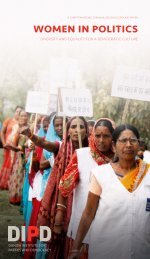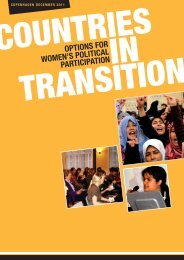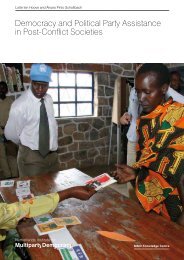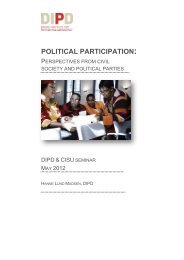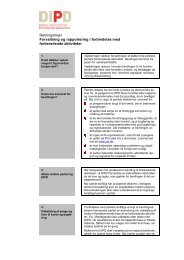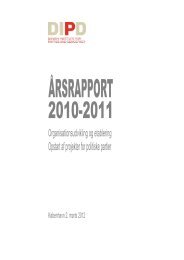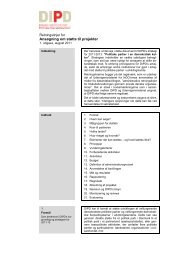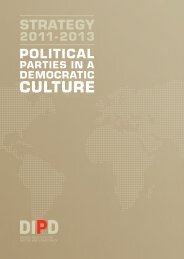Political Parties in Africa: Challenges for Sustained Multiparty
Political Parties in Africa: Challenges for Sustained Multiparty
Political Parties in Africa: Challenges for Sustained Multiparty
You also want an ePaper? Increase the reach of your titles
YUMPU automatically turns print PDFs into web optimized ePapers that Google loves.
0<br />
<strong>Political</strong> <strong>Parties</strong> <strong>in</strong> <strong>Africa</strong>: <strong>Challenges</strong> <strong>for</strong> Susta<strong>in</strong>ed <strong>Multiparty</strong> Democracy<br />
across ethnicity and region (Southall 2005). Generally, however, this is an area <strong>in</strong><br />
which the evidence so far is still, by and large, anecdotal, although the general trend<br />
shows that there is more party competition, with the exception of dom<strong>in</strong>ant-party<br />
states, than there was <strong>for</strong> example dur<strong>in</strong>g the first two multiparty elections <strong>in</strong> most<br />
<strong>Africa</strong>n countries.<br />
4.5 Party coalitions and networks<br />
With the democratic renaissance of the 1990s, those political parties that were banned<br />
dur<strong>in</strong>g authoritarian rule have been resurrected and new ones created. With the<br />
exception of the 16 <strong>Africa</strong>n countries that are ruled by dom<strong>in</strong>ant-party systems (see<br />
Table 4.2), the majority are multiparty or two-party systems. One contribut<strong>in</strong>g factor<br />
is that the number of political parties <strong>in</strong> each country has <strong>in</strong>creased dramatically,<br />
with fewer dom<strong>in</strong>ant-party states as a result. The awaken<strong>in</strong>g of ethnicity which was<br />
suppressed dur<strong>in</strong>g the outburst of synthetic nationalism dur<strong>in</strong>g the 1950s and 1960s<br />
has also meant that the post-1990s political parties are not less ethnically <strong>in</strong>cl<strong>in</strong>ed<br />
<strong>in</strong> their orientation than their pre-<strong>in</strong>dependence predecessors. In some countries<br />
the proliferation of political parties has meant the demise of the so-called national<br />
political parties (e.g. KANU of Kenya, the United National Independence Party<br />
(UNIP) <strong>in</strong> Zambia, etc.); <strong>in</strong> others it has strengthened the old guard and enabled<br />
them to reta<strong>in</strong> or stage a comeback to power (e.g. the Revolutionary State Party<br />
(Chama Cha Map<strong>in</strong>duzi, CCM) <strong>in</strong> Tanzania).<br />
Although they are at the embryonic stage, <strong>Africa</strong>n party-to-party coalitions operate<br />
at four levels—national, pan-<strong>Africa</strong>n, regional and global party-to-party partnership.<br />
The follow<strong>in</strong>g are examples of each of these four trajectories.<br />
4.5.1 National party coalitions<br />
Coalitions as <strong>for</strong>ms of party-to-party-partnership are common to all countries, and<br />
are political mechanisms <strong>for</strong> aggregat<strong>in</strong>g <strong>in</strong>terests and reach<strong>in</strong>g a middle ground <strong>in</strong><br />
order to <strong>for</strong>m the government <strong>in</strong> situations where no s<strong>in</strong>gle political party w<strong>in</strong>s the<br />
majority of parliamentary seats. In the severely divided societies of <strong>Africa</strong>, party-toparty<br />
becomes an important vehicle <strong>for</strong> national <strong>in</strong>tegration. In this sense, partyto-party<br />
partnership enables political parties to articulate their programmes and<br />
<strong>in</strong>terests and through dialogue create ideological aff<strong>in</strong>ity beyond the ethnic, cultural<br />
and l<strong>in</strong>guistic group. The <strong>in</strong>tegrative role of national party-to-party partnership is<br />
also relevant to regional party-to-party partnerships; it supports regional <strong>in</strong>tegration<br />
and <strong>in</strong>terdependence between regional and sub-regional political entities.



